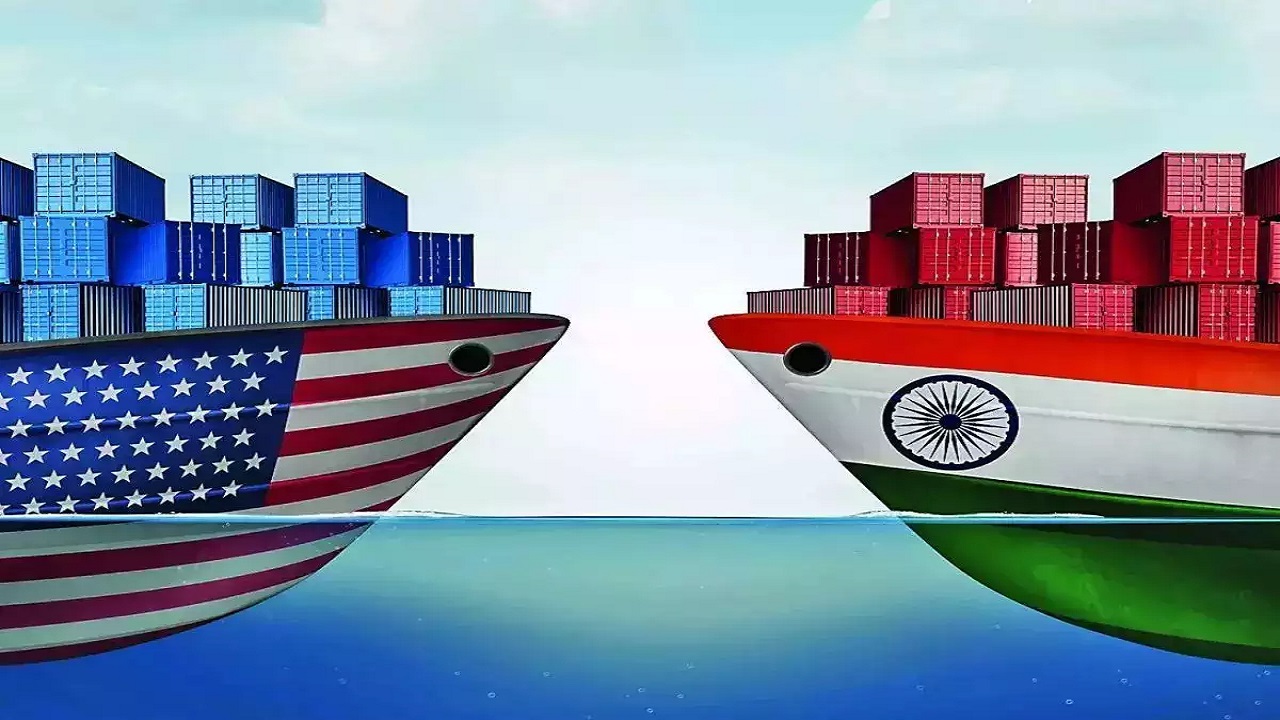U.S. Reciprocal Tariffs: Global and Indian Implications
Context
On April 2, former U.S. President Donald Trump announced a sweeping tariff policy as part of America’s Liberation Day celebrations. This move introduced reciprocal tariffs against major trading partners, aiming to correct long-standing trade imbalances, protect domestic industries, and realign global trade flows.
These developments are significant as they impact bilateral relations, global trade architecture, and economic stability. A clear understanding of this issue is essential for analyzing international economic policies and their ripple effects.
What are Reciprocal Tariffs?
-
A reciprocal tariff is a retaliatory trade measure, imposed in response to the tariffs or trade restrictions placed by another country.
-
It reflects the principle of trade fairness—if one country imposes duties on imports, the affected country mirrors similar tariffs in response.
U.S. Framework:
-
Known as “USA Discounted Reciprocal Tariff”
-
Calculated by:
-
Estimating the tariff a country imposes on U.S. goods
-
Halving that rate to arrive at the U.S. response
-
Structure of Tariffs Announced
Two sets of tariffs were introduced:
1. Base Tariff
-
10% tariff on all imports
-
Applies to all countries that impose tariffs on U.S. goods
-
Effective from April 5, 2025
2. Country-Specific Tariff
-
Varies by country
-
Calculated based on:
-
Tariff rates on U.S. goods
-
Currency manipulation
-
Weak labor and environmental laws
-
Trade regulations that disadvantage the U.S.
-
-
Effective from April 9, 2025
Tariff Structure on Indian Goods
-
As per the U.S. Trade Department, India imposes 52% tariffs on American goods
-
In response, the U.S. has announced a 26% tariff on Indian exports
Why Is the U.S. Imposing These Tariffs?
-
Reduce Trade Deficit:
-
Targeting the $1.2 trillion trade deficit
-
-
Reshoring Production:
-
Incentivizing businesses to relocate production to the U.S.
-
-
Attract Investment:
-
Policy expected to bring in $6 trillion in domestic investments
-
-
Revenue Generation:
-
Tariff revenue to be used for debt reduction and tax relief
-
-
Revive Manufacturing:
-
Aimed at boosting U.S.-based jobs and industries
-
Impact on India
Positive Impacts
-
Tariff Advantage:
-
India faces a lower tariff (26%) compared to:
-
China (34%)
-
Vietnam (46%)
-
Thailand & Taiwan (36%)
-
-
May help increase market share in U.S.
-
-
Boost to Textiles:
-
U.S. market could open up for Indian textile exports
-
Especially over competitors like Bangladesh and Vietnam
-
-
Flexibility in Trade Balance:
-
India’s low electronics imports from U.S. allow strategic tariff management
-
-
Pharma Exemption:
-
Pharmaceuticals excluded from reciprocal tariffs
-
India exports $8.7 billion worth pharma products to the U.S. annually
-
Negative Impacts
-
Export Pressure:
-
U.S. is India’s second largest trading partner
-
Accounts for 18% of total Indian exports
-
-
Decline in Export Volume:
-
Possible 2–3% decline in exports to the U.S.
-
-
Domestic Industry Strain:
-
Could impact profit margins and employment in export sectors
-
-
GDP Impact:
-
Growth may reduce by 50 basis points, from 6.5% to 6%
-
-
Currency Risk:
-
Drop in dollar inflow may weaken the Indian rupee
-
Global Implications
Global Economy
-
Slower Global Growth:
-
Trade tensions could slow growth and increase volatility
-
-
Inflation Risk:
-
Import prices rise, leading to inflation in U.S. and globally
-
Only mitigated if U.S. dollar strengthens (e.g., from ₹85 to ₹108)
-
-
Trade Flow Disruptions:
-
Exporters may absorb losses or pass on costs, reducing demand
-
-
Supply Chain Realignment:
-
Exporters may seek alternative markets, altering global supply networks
-
-
Retaliatory Measures:
-
Countries may respond with counter-tariffs, risking trade wars
-
U.S. Economy
-
Stagflation Risk:
-
Combination of low growth and high inflation
-
-
Recession Possibility:
-
Rising costs and falling demand may trigger GDP contraction
-
What Lies Ahead?
-
Trade Negotiations:
-
Bilateral talks may lead to tariff revisions or sectoral exemptions
-
-
Avoiding Trade Wars:
-
Escalation will hurt both sides; mutual restraint is critical
-
-
Strategic Engagement:
-
Diplomacy and calibrated trade policies can preserve economic stability and growth momentum
-

.jpg)

.png)
Comments (0)